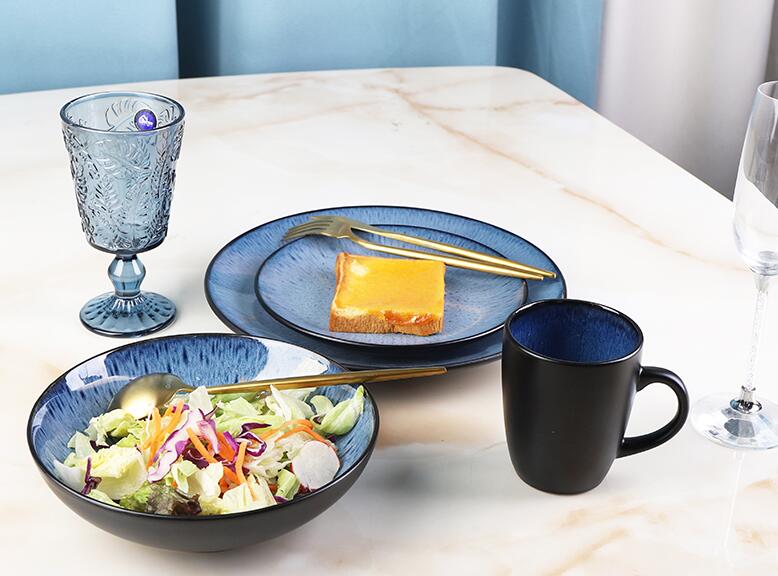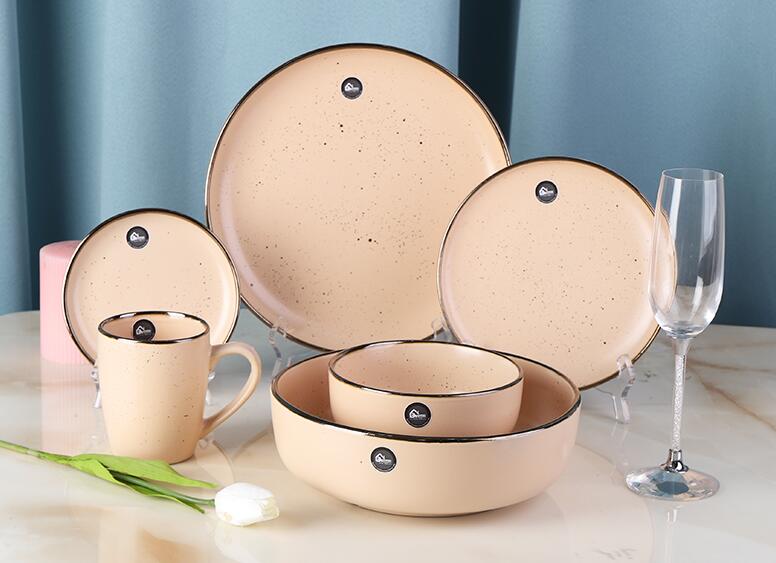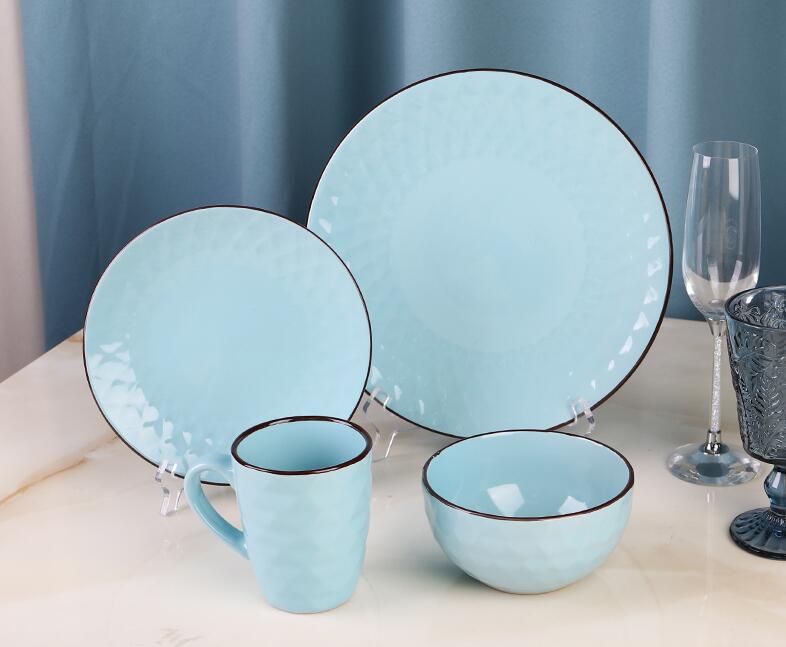Pulished on May. 15, 2025
Ceramic bowls have been present on human dining tables for many years, from the coarse pottery of the Neolithic Age to the celadon and white porcelain of the Tang and
Song Dynasties, and now to the dazzling array of modern bone China. Their existence has long transports the function of merely serving as containers and has become a
symbol that integrates practicality, aesthetics and culture. This vitality that transcends time and space stems from the unique physical and chemical properties of ceramic
materials and their comprehensive advantages demonstrated in competition with other materials.

1.The scientific code of ceramic materials.
The raw materials of ceramics are derived from natural clay and mineral quartz. After being fired at a temperature above 1300℃, the silicate minerals undergo vitrification
reactions, forming a dense crystal structure. This makes the water absorption rate of the finished porcelain bowl less than 0.5%, and the surface pores are almost completely
closed, completely cutting off the physical space for bacterial growth. Laboratory data show that the survival time of Escherichia coli on ceramic surfaces is only one third of
that on metal tableware. This natural antibacterial property is particularly important in modern society where food safety requirements are increasingly strict.
The high-temperature sintering process also endows ceramics with outstanding stability. Unlike plastic products that may release harmful substances such as bisphenol A
above 60℃, ceramics have completed complete inertization after being tempered in a kiln fire. Research from Kyoto University in Japan has confirmed that even when
continuously heated in a microwave oven for 30 minutes, the content of heavy metals dissolved from porcelain is still below the detection limit. The advancement of glaze
technology has endowed modern ceramic bowls wholesale from China with a chemical passivation layer similar to that of glass.

2.Material Breakthrough in Multi-dimensional comparison.
When we observe the ceramic bowl within the coordinate system of material competition, its advantages become more prominent. Although metal bowls are sturdy and durable,
their thermal conductivity is as high as 50W/(m·K), which is 20 times that of ceramics. This directly leads to them being extremely hot to the touch when in use. More importantly,
when the chromium and iron elements in stainless steel come into contact with acidic foods such as tomatoes, they will undergo oxidation reactions and produce unpleasant odors.
The FDA of the United States once tested and found that after 12 hours of holding soup in metal containers that did not meet food-grade standards, the nickel leaching amount
exceeded the standard by 8 times.
Glass bowls seem crystal clear, but their density is as high as 2.5g/cm³. Bowls of the same capacity are 40% heavier than ceramic ones, which does not meet the requirements of
ergonomic design. Its fatal weakness lies in the brittle fracture characteristic - when the temperature difference between the inside and outside exceeds 60℃, thermal stress will
cause microcracks in the glass. The German kitchenware safety report shows that 23% of the incidents of glassware shattering due to sudden temperature changes account for
the total, while the breakage rate of ceramics in such scenarios is less than 2%.

Although wooden tableware has been labeled as "natural and environmentally friendly" in recent years, the porosity of the tubular cells in its fiber structure is as high as 15%,
making it a natural culture medium for microorganisms. Experiments conducted by Tsinghua University have confirmed that after being reused for three months, the total
number of colonies in bamboo and wooden bowls can reach more than 300 times that of ceramic bowls. Although the resin coating can temporarily seal the pores, it will cause
new food safety hazards.
3.The perfect balance of functional aesthetics.
The ultimate competitiveness of ceramic bowls lies in their precise grasp of human needs. The wall thickness design of 5-7mm not only ensures a light and comfortable feel
when held at the end but also provides sufficient impact resistance. The friction coefficient of the glaze surface is controlled between 0.1 and 0.15, which precisely balances
the anti-slip requirement and the convenience of cleaning. The warm white body can reflect 85% of visible light. It neither interferes with vision like metal reflection nor can
it present the original color of food to the greatest extent. Behind these seemingly simple parameters lies the thousand-year-old experience and wisdom of potters.
From a cultural perspective, ceramic bowls manufactured in Chinese factory carry unique symbolic meanings. The plum green glazed bowl of Longquan Kiln in the Song Dynasty infuses the hazy aesthetic of
the misty rain in the south of the Yangtze River into daily dining. The jade-like texture of the white porcelain bowls from Dehua in the Ming Dynasty echoes the refined taste
pursued by scholars. This ability to elevate practical objects into cultural carriers is beyond the reach of other materials.
In terms of environmental protection attributes, the carbon emissions throughout the entire life cycle of ceramic bowls are only one fifth of those of stainless steel tableware.
Even if it is damaged, the ground porcelain powder can be recycled as a concrete admixture, truly achieving an ecological cycle of "coming from the soil and returning to the earth".
When we pick up ceramic bowls on modern dining tables, what we touch is not only the precisely calculated physical parameters, but also the depth of human civilization's
understanding of materials. From the stability design at the molecular level to the engineering considerations at the millimeter level, and then to the aesthetic inheritance
spanning a thousand years, ceramic bowls have proved their irreplaceable classic status with the combined advantages of science, art and philosophy. This multi-dimensional
value integration is precisely the fundamental reason why it has remained at the center of the dining table through all the vicissitudes of time.